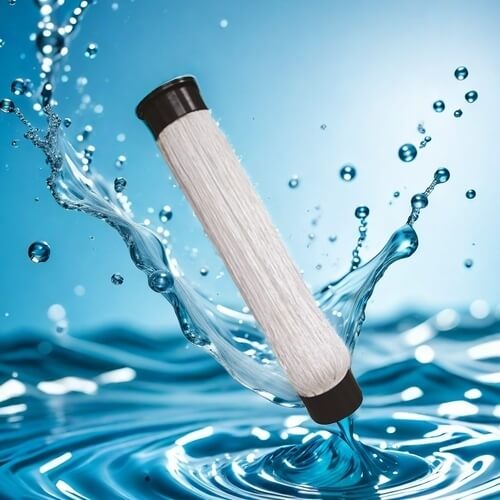How many factors are there in the design of MBR membrane components?
The key points of MBR membrane component design are:
(1) Selection of membrane fiber material. Material selection is the basis of the entire process system and plays a key role. The choice of material determines the life and performance of the membrane. The commonly used membrane fiber materials in China are organic membrane and inorganic membrane. Because different materials have different advantages and disadvantages, they can be selected according to actual conditions. In terms of price difference between the two, organic membrane has more cost advantages, but in terms of service life, inorganic membrane has a longer service life. There are also certain differences in performance. Inorganic membrane is more resistant to corrosion, erosion, high temperature, strong acid and alkali, but the process of organic membrane is mature.
(2) Selection of membrane fiber performance. Generally, it is necessary to consider chemical strength and mechanical properties. Good chemical strength of membrane fiber means that it can clean more types of chemical substances and has higher oxidation resistance and corrosion resistance; mechanical properties mainly refer to the external force impact that can be withstood, which is directly related to the degree of fracture and elongation at break of membrane fiber.

(3) Selection of membrane fiber pore size. The common membrane pore sizes of MBR membrane systems are ultrafiltration membrane and microfiltration membrane. The two have different membrane pore sizes, but there is no obvious difference in the use effect in actual application. At present, there is no unified requirement for the membrane pore size standard of MBR membrane in my country.
(4) Key points of membrane component design. The membranes of the immersed MBR system mainly include hollow fiber membrane and flat membrane. Among them, hollow fiber membrane is divided into curtain type, bundle type and columnar type; flat membrane is divided into plate type and vertical type. In actual application, hollow fiber membrane is more widely used. In view of the different advantages and disadvantages of various membranes, the membrane type can be selected according to different occasions.
(5) Key points of membrane component structure design. Common membrane system structures include water system, air distribution system, cleaning system, etc. In actual sewage treatment, the sludge congestion problem in leachate treatment can be reduced or avoided by optimizing the structural design method. Domestic sewage treatment plants often design MBR membrane systems as modular structures to facilitate overall management and control and ensure good treatment performance.
